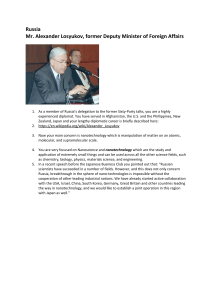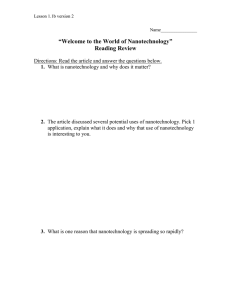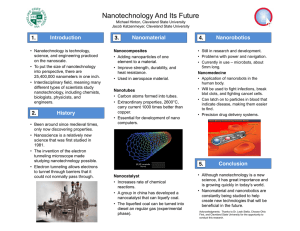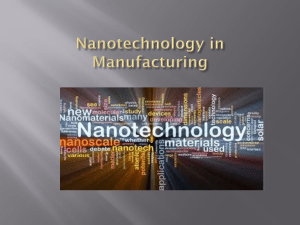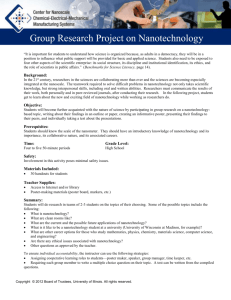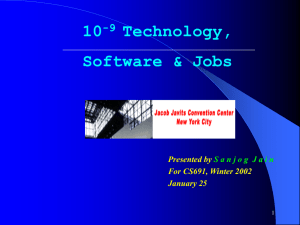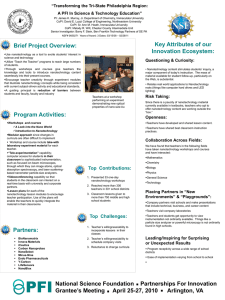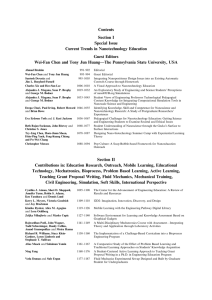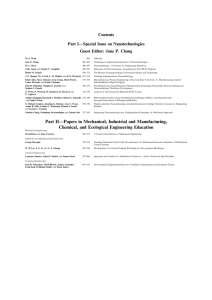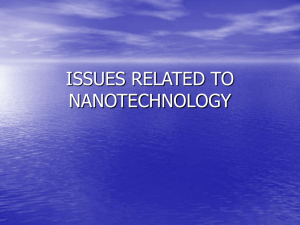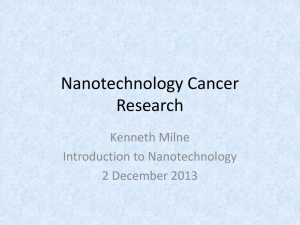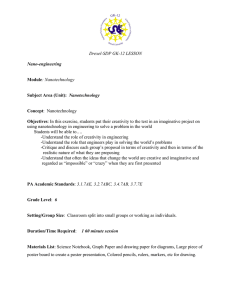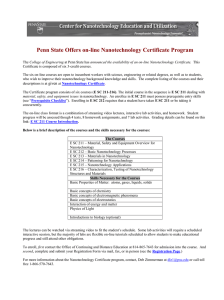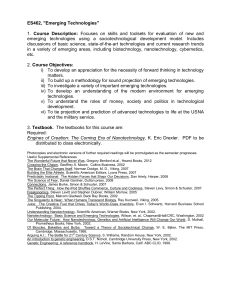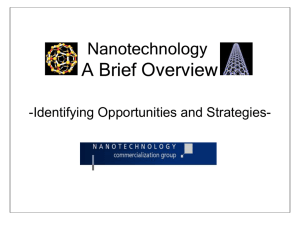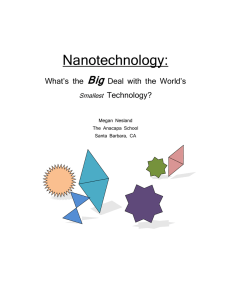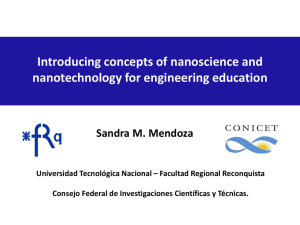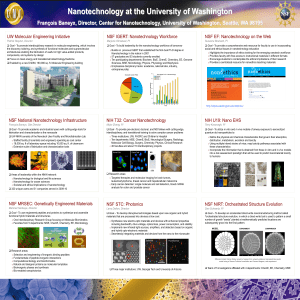Innovation, Risk and Stakeholder Engagement: Framing
advertisement
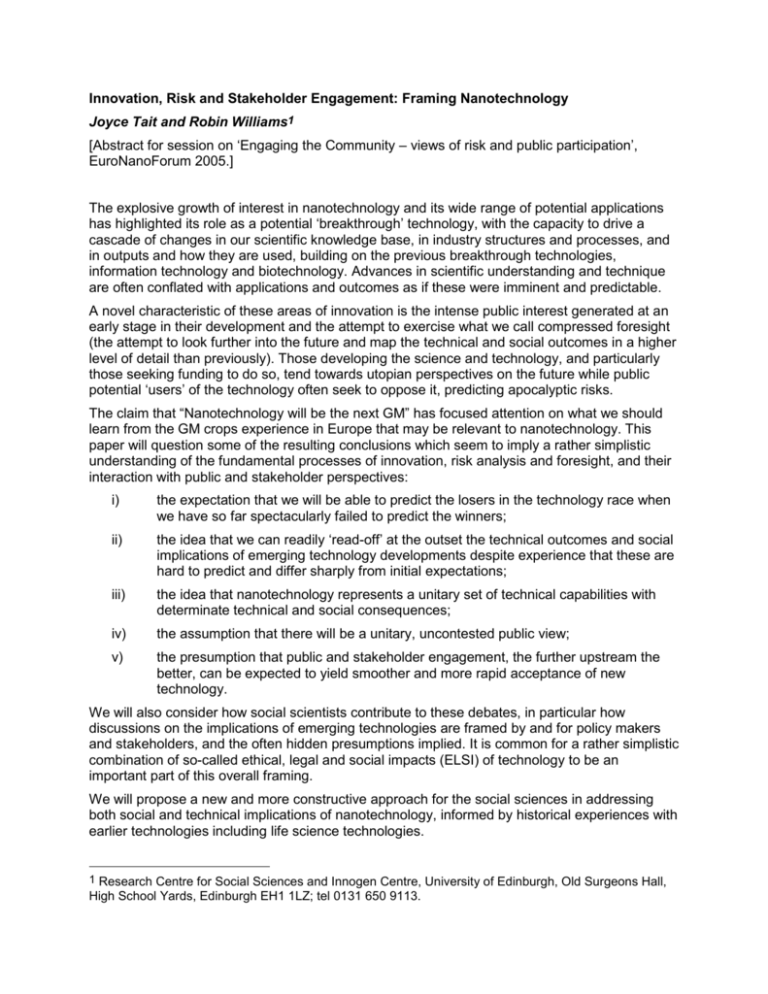
Innovation, Risk and Stakeholder Engagement: Framing Nanotechnology Joyce Tait and Robin Williams1 [Abstract for session on ‘Engaging the Community – views of risk and public participation’, EuroNanoForum 2005.] The explosive growth of interest in nanotechnology and its wide range of potential applications has highlighted its role as a potential ‘breakthrough’ technology, with the capacity to drive a cascade of changes in our scientific knowledge base, in industry structures and processes, and in outputs and how they are used, building on the previous breakthrough technologies, information technology and biotechnology. Advances in scientific understanding and technique are often conflated with applications and outcomes as if these were imminent and predictable. A novel characteristic of these areas of innovation is the intense public interest generated at an early stage in their development and the attempt to exercise what we call compressed foresight (the attempt to look further into the future and map the technical and social outcomes in a higher level of detail than previously). Those developing the science and technology, and particularly those seeking funding to do so, tend towards utopian perspectives on the future while public potential ‘users’ of the technology often seek to oppose it, predicting apocalyptic risks. The claim that “Nanotechnology will be the next GM” has focused attention on what we should learn from the GM crops experience in Europe that may be relevant to nanotechnology. This paper will question some of the resulting conclusions which seem to imply a rather simplistic understanding of the fundamental processes of innovation, risk analysis and foresight, and their interaction with public and stakeholder perspectives: i) the expectation that we will be able to predict the losers in the technology race when we have so far spectacularly failed to predict the winners; ii) the idea that we can readily ‘read-off’ at the outset the technical outcomes and social implications of emerging technology developments despite experience that these are hard to predict and differ sharply from initial expectations; iii) the idea that nanotechnology represents a unitary set of technical capabilities with determinate technical and social consequences; iv) the assumption that there will be a unitary, uncontested public view; v) the presumption that public and stakeholder engagement, the further upstream the better, can be expected to yield smoother and more rapid acceptance of new technology. We will also consider how social scientists contribute to these debates, in particular how discussions on the implications of emerging technologies are framed by and for policy makers and stakeholders, and the often hidden presumptions implied. It is common for a rather simplistic combination of so-called ethical, legal and social impacts (ELSI) of technology to be an important part of this overall framing. We will propose a new and more constructive approach for the social sciences in addressing both social and technical implications of nanotechnology, informed by historical experiences with earlier technologies including life science technologies. 1 Research Centre for Social Sciences and Innogen Centre, University of Edinburgh, Old Surgeons Hall, High School Yards, Edinburgh EH1 1LZ; tel 0131 650 9113.
